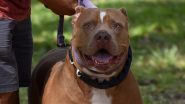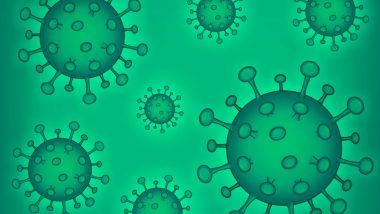New Delhi, August 18: The Centers for Disease Control and Prevention (CDC) has issued a health alert as Parvovirus B19, known for causing the “slapped-cheek” rash, is currently on the rise in the United States.
Despite the lack of routine surveillance for this virus, several indicators suggest widespread transmission, particularly affecting high-risk groups such as pregnant individuals and those with blood disorders. Mpox Outbreak: Amid Surge in Monkeypox Cases in Africa, Sweden and Pakistan, Expert Urges Health Authorities To Begin Screening for Virus at Airports in India.
Rising Cases and Health Concerns
Doctors have reported an unusual increase in parvovirus-related complications among vulnerable populations. As of June 2024, laboratory data indicated that approximately 10% of the US population, including 40% of children aged 5 to 9, had antibodies suggesting recent infection with Parvovirus B19, according to the CDC. This alert follows similar reports from Europe, where the European Centre for Disease Prevention and Control noted unusually high cases in 14 countries, including France, Spain, and Germany. Mpox Outbreak: How Does It Spread? What Are Prevention Steps?
What is Parvovirus B19?
Parvovirus B19, commonly referred to as the “fifth disease,” is a virus that primarily affects children. Named for its rank as the fifth in a series of viral childhood skin rashes, it spreads through respiratory droplets when an infected person coughs or sneezes. The virus is most prevalent during late winter, spring, and early summer, with outbreaks occurring every three to four years.
In the US, most people will encounter the virus at some point in their lives, often during childhood. By age 5, up to 10% of children have contracted the virus, and by age 40, around 70% of people have been infected.
Parvovirus B19: Symptoms and Risks
Many individuals infected with Parvovirus B19 are asymptomatic. However, those who do exhibit symptoms may experience fever, muscle aches, cough, and a sore throat. A characteristic “slapped cheek” rash often develops in children, along with joint pain and rashes on other parts of the body. Adults may also experience joint pain and a rash on the torso, with joint discomfort potentially lasting for months.
While most people recover without complications, pregnant individuals, those with weakened immune systems, and people with blood disorders like sickle cell disease are at higher risk for severe outcomes. In pregnant individuals, the virus can lead to serious conditions for the fetus, including anemia and, in rare cases, miscarriage.
Parvovirus B19: Prevention and Treatment
There is no vaccine for Parvovirus B19, so prevention relies on hygiene practices such as regular hand washing and avoiding close contact with infected individuals. For those with blood disorders, treatment may involve red blood cell transfusions and intravenous immunoglobulin. The CDC also advises those in high-risk environments, such as schools or daycare centers, to consider wearing masks for added protection during the outbreak.
(The above story first appeared on LatestLY on Aug 18, 2024 07:12 PM IST. For more news and updates on politics, world, sports, entertainment and lifestyle, log on to our website latestly.com).













 Quickly
Quickly




















